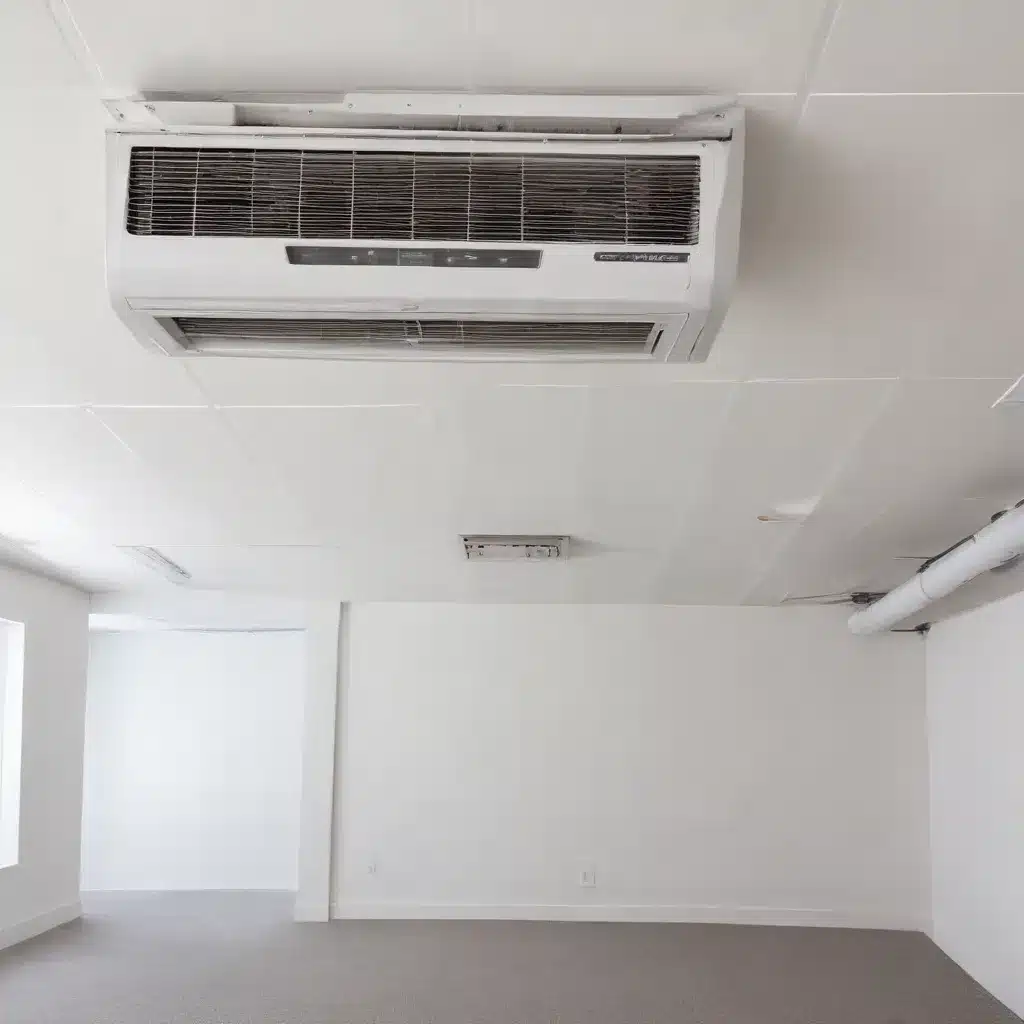
As an experienced air conditioning specialist, I’ve seen firsthand the significant impact that airflow optimization can have on the performance and efficiency of HVAC systems. In this article, I’ll share my insights and personal experiences to help businesses and homeowners alike achieve optimal climate control and energy savings.
The Importance of Proper Airflow
An air conditioning system is much more than just a cooling unit – it’s a complex network of components that work together to circulate and condition the air throughout a space. Proper airflow is the cornerstone of an efficient and effective HVAC system. When airflow is restricted or unbalanced, it can lead to a host of issues, including uneven cooling, elevated energy bills, and premature wear on system components.
One of the most common problems I encounter is poor airflow to certain areas of a building, often the upper floors or rooms furthest from the air handler. This can result in hot spots, where some areas feel comfortable while others are uncomfortably warm. Addressing airflow issues is crucial for ensuring consistent comfort and minimizing the strain on the HVAC equipment.
Diagnosing and Improving Airflow
The first step in addressing airflow problems is to thoroughly inspect the HVAC system and ductwork. I often start by checking the air filters, as clogged or dirty filters can significantly restrict airflow. Replacing the filters with high-quality, properly sized options can make a noticeable difference.
Next, I’ll examine the ductwork for any obstructions or damage that may be impeding airflow. Leaks, kinks, or crushed sections of ducts can all contribute to airflow issues. In some cases, I may recommend having the ductwork professionally cleaned or resealed to ensure optimal airflow.
One of the most effective ways to improve airflow is by balancing the system. This involves adjusting the dampers in the ductwork to ensure each room or zone is receiving the appropriate amount of airflow. It’s a delicate process that requires careful measurement and fine-tuning, but the results can be dramatic. By ensuring that every area of the building receives the right amount of conditioned air, you can achieve a more comfortable and energy-efficient HVAC system.
Optimizing for Energy Efficiency
Improving airflow doesn’t just enhance comfort – it can also lead to significant energy savings. When an HVAC system is operating with optimal airflow, it doesn’t have to work as hard to maintain the desired temperature. This translates to lower energy consumption and, ultimately, lower utility bills.
I often work with business owners who are looking to reduce their carbon footprint and operating costs. By focusing on airflow optimization, we can implement strategies like:
- Upgrading to high-efficiency HVAC equipment: Modern, energy-efficient systems are designed to operate at peak performance with proper airflow.
- Implementing zonal controls: Allowing different areas of the building to be conditioned independently can improve overall efficiency.
- Ensuring proper insulation and air sealing: Preventing air leaks and improving the building envelope can enhance the effectiveness of the HVAC system.
By taking a holistic approach to airflow optimization, we can create a more comfortable and cost-effective climate control solution for businesses.
Staying on Top of Maintenance
Maintaining optimal airflow is an ongoing process, and it’s crucial to have a proactive maintenance plan in place. Regular HVAC system tune-ups, duct cleaning, and filter changes can help ensure that your climate control equipment continues to perform at its best.
One of the most common issues I’ve encountered is a clogged air conditioner drain line. Dust, mold, and other debris can build up over time, causing the drain to become blocked and leading to water backups or even system failure. Regularly inspecting and clearing the drain line can prevent these costly problems.
Another important maintenance task is checking the airflow at each register or vent. I often use a simple tissue paper test to quickly assess the air velocity and identify any problem areas. By addressing these issues promptly, we can keep the system running efficiently and prevent larger, more expensive problems down the line.
Embracing Technological Advancements
The HVAC industry is constantly evolving, with new technologies and innovations emerging that can further enhance airflow and efficiency. One exciting development is the use of smart, connected HVAC systems that can automatically monitor and adjust airflow based on real-time data and occupancy patterns.
These advanced systems utilize sensors, algorithms, and wireless connectivity to optimize the distribution of conditioned air throughout a building. By continuously monitoring factors like temperature, humidity, and airflow, they can make subtle adjustments to ensure consistent comfort while minimizing energy consumption.
I’ve had the opportunity to work with several clients who have implemented these smart HVAC solutions, and the results have been impressive. Not only have they seen significant reductions in their energy bills, but they’ve also experienced a more comfortable and responsive climate control system.
As an air conditioning specialist, I’m always eager to stay on the cutting edge of HVAC technology. By embracing these innovative solutions, we can help businesses achieve new levels of efficiency and comfort, all while contributing to a more sustainable future.
Conclusion
Optimizing airflow is a critical component of maintaining an efficient and comfortable HVAC system. Whether you’re a business owner, facility manager, or homeowner, addressing airflow issues should be a top priority. By following best practices for maintenance, system balancing, and embracing technological advancements, you can ensure your climate control solutions are working at their peak performance.
At Hamilton Air Conditioning, we pride ourselves on our expertise in HVAC optimization and energy efficiency. Our team of specialists is dedicated to helping businesses and homeowners alike achieve the ultimate in comfort and cost-savings. If you’re ready to take your climate control to the next level, we encourage you to reach out and let us help you “chill out” with a customized solution.